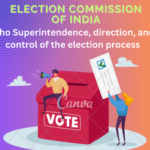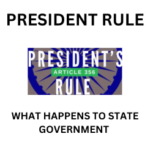Parliament Winter Session Kicks Off: Spotlight on Key Bills and National Agendas

The Winter Session of Parliament has begun today.
LEARNING FROM HOME/ WITHOUT CLASSES/ BASICS
Sessions of Parliament
A Session is the period of time between the meeting of a Parliament and its prorogation. During the course of a Session, either House may adjourn to such date as it pleases.
The power to convene a session of Parliament rests with the government. The decision taken by the Cabinet Committee on Parliamentary Affairs. The decision of the Committee is formalized by the President, in whose name MPs are summoned to meet for a session. There should not be a gap of more than six months between two sessions of the Parliament.
By convention, Parliament meets for three sessions in a year. The longest, the Budget Session, starts towards the end of January, and concludes by the end of April or first week of May. The session has a recess so that Parliamentary Committees can discuss the budgetary proposals.
The second session is the three-week Monsoon Session, which usually begins in July and finishes in August. The parliamentary year ends with a three-week-long Winter Session, which is held from November to December.
Special session: The constitution of India makes provisions for special circumstances where sittings of parliament can be called for if members of parliament disapprove of the Emergency imposed. For this, a minimum of 1/10th of members of Lok Sabha request the speaker in a written note.
Article 85 of the Constitution specifies the summoning of Parliament. This provision requires the central legislature to meet at least once a year and allows no more than six months to elapse between two sessions.
Article 87(1) of the Constitution provides:-
“At the commencement of the first session after each general election to the House of the People and at the commencement of the first session of each year the President shall address both Houses of Parliament assembled together and inform Parliament of the causes of its summons.”
The Indian Parliament comprises the President and the two Houses- Lok Sabha(House of the People) and Rajya Sabha(Council of States).
The President has the power to summon(Art.85(1)) and prorogue(Art.85(2a)) either House of Parliament or to dissolve Lok Sabha(Art.85(2b)).
The period between the prorogation of Parliament and its reassembly in a new Session is termed as a ‘recess’.
• ‘Adjournment’ is a short break of a few hours or days and then the House resumes its sitting.
• If the adjournment without any time scale, known as ‘adjournment sine die.
Adjournment
This is a short recess within a session of the Parliament, called by the Presiding Officer of the House. An adjournment suspends the work in a sitting for a specified time, which may be hours, days or weeks. In this case, the time of reassembly is specified. An adjournment does not bring to end a session, but merely postpones the proceedings of the house to a future time and date.
Adjournment Sine Die
When the Presiding Officer adjourns the house without fixing any date or time of the next meeting; means terminating a sitting of Parliament for an indefinite period.
Prorogation
the President on the advice of the Council of Ministers.
Prorogation means the termination of a session of the House. Prorogation terminates both the sitting and session of the House. All pending notices (other than those for introducing bills) lapse and fresh notices must given for the next session.








0 Comments